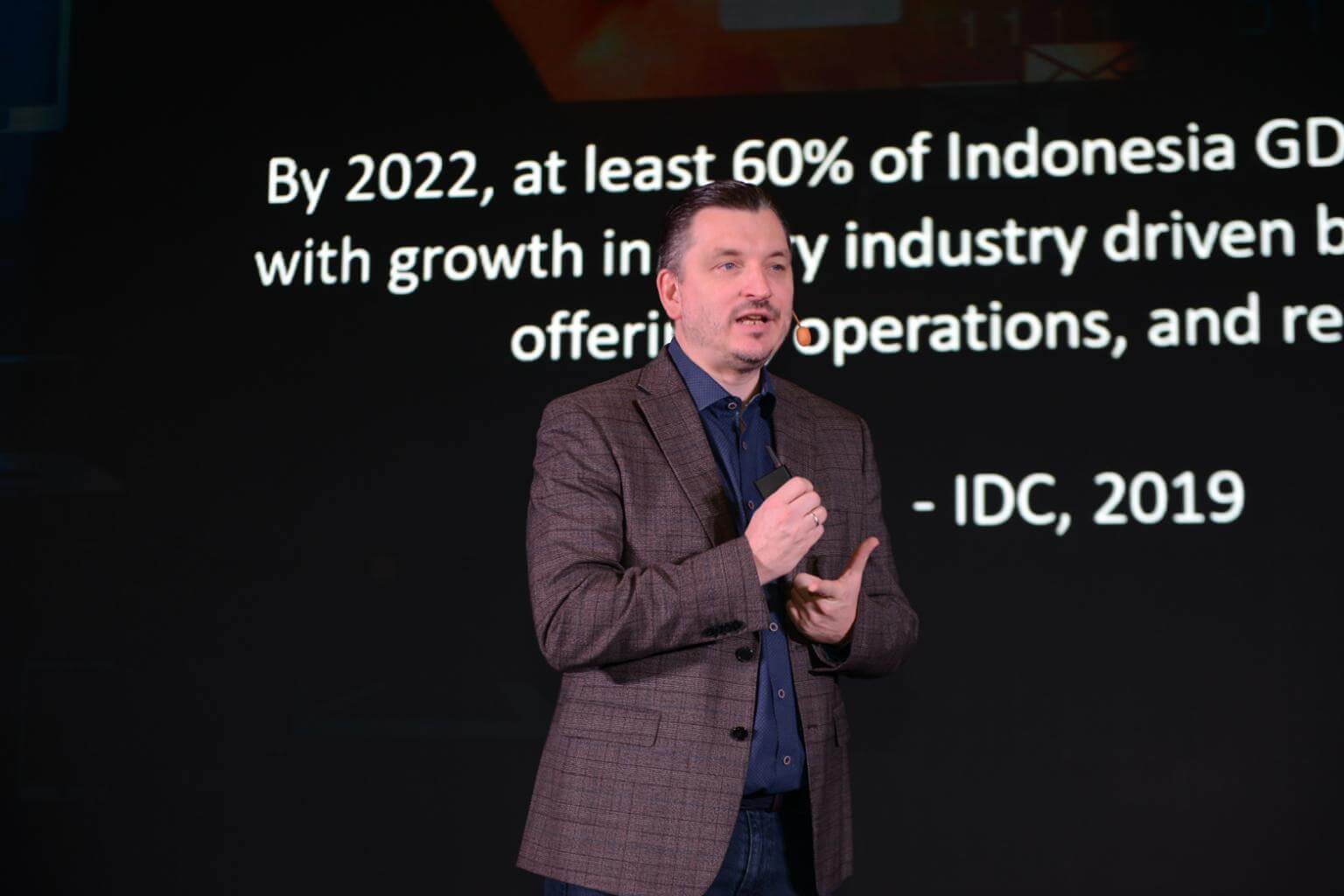Digital transformation is a journey of business transformation. After companies have competed to invest in digital transformation, the following question arises. What is the impact of financial returns on technological investments in digital transformation?
Moreover, advanced digital transformation or Digital Transformation (DX) 2.0 will be based on data. According to data from the marketing consulting company, International Data Corporation (IDC), in 2022, 50% of companies in Indonesia will have formed digital-native platforms, with the Cloud, Mobility and Big Data & Analytics as their main technologies, to be able to survive and compete in the digital economy market. So, the question is then how to maximize return on digital investment (RoI)?
Measuring Success Rates of Digital Transformation
Based on the Telstra Disruptive Decision Making Whitepaper, 2018, Indonesian companies are relatively optimistic and mature in the face of digital transformation. More than a quarter (26%) of business leaders in Indonesia describe their companies as being “very mature” digitally, compared with an average of 21% globally. However, the key findings from the study also raised concerns.
On the one hand, it is extremely positive if Indonesian companies are optimistic about undergoing digital transformation. But on the other hand, many Indonesian companies that have begun are already feeling satisfied with their progress. This sense of complacency risks putting an end to innovation and hindering companies from responding to the digital transformation growth of other similar companies.
The financial success of all Indonesian companies undergoing digital transformation has, in fact, not been proven. Does the company’s profit increase with digital transformation? Are they more cost-efficient? Can they increase customer satisfaction? These are all factors that must be included in the key performance indicators (KPIs), which indicate a business’ success.
Erik Meijer, the CEO of Telkomtelstra, considers financial success in digital transformation to be the key factor underlying Telkomtelstra’s 2019 Digital Summit entitled “Maximizing the Return on Digital Investment” held in the Samisara Ballroom, Sopo Del Rey Tower, Mega Kuningan in Jakarta on Thursday (21/11).
Many Indonesian companies have already started their digital transformation, but not all companies have directly benefited financially from the results. “I am certain that the financial benefits will follow, but it requires hard work and direction. There need to be relevant KPIs, because maybe there has already been a fall in business costs, but because the KPIs are not there, we are not aware of it”, he explained.
Erik also expressed that it is not easy to determine return on investment (RoI) for technological expenditures, because it is a complex process that depends on certain business requirements. “However, translating technology into business value can help companies to determine metrics to measure the company’s RoI based on certain criteria, including identifying the value of technology selection for business productivity, weighing the relationship between existing technological legacy and the innovations being carried out, and choosing the appropriate management services provider for better operational cost management,” stated Erik.
Telkomtelstra, according to him, can help organizations to operate better and accelerate their productivity to obtain results that are greater than or equal to investment resources. “This is the key factor in digital transformation success,” he said.
Digital KPIs Become a Priority
At the same event, Mevira Munindra, IDC Indonesia’s Head of Operations, explained that along with the rapid development of digital transformation, there are four main challenges that need to be considered in Indonesia. Around 70% of respondents surveyed by IDC rated the strategic road map for digital investment as a main challenge, followed by developing digital skills (65%), building the right organizational structures (65%), and determining KPIs to measure digital success (45%).
Therefore, she continued, in addition to developing a strategic road map and the right organizational structure, creating digital KPIs is considered to be a new priority for Indonesian companies. “In 2023, 80% of entities in the Asia-Pacific region will have incorporated new digital KPIs – that focus on the level of product/service innovation, data capitalization, and the employee experience – to navigate the digital economy,” said Mevira.
Based on IDC Indonesia’s data, examples of digital KPIs on the financial side are related to innovation rates, customer advocacy, data capitalization, business operations, and work and labor supply.
Strategy to Maximize Value
In the 2019 Digital Summit panel discussion, Benny Ranti, IT Division Head at Indonesia’s Logistics Agency (Bulog), explained the value added by technological investments made through the digitalization program for the distribution of Non-Cash Food Assistance (BPNT) for low to no income communities. Bulog has also developed a digital business (e-commerce) to support the sale of its staple items to consumers, using a transaction application called Panganandotcom.
Through this application, digital sales make it easier for communities to receive their basic needs without having to go to the market. Bulog’s digital transformation began by moving away from traditional commerce using SIL and SIAB applications toward electronic commerce that uses API, ERP ODOO, and cloud-based technology.
Meanwhile, to maximize the business value of IT, Bulog firstly uses the appropriate people, process, and technology cycle (PPT cycle) indicator. Secondly, it uses the feasibility methodology to measure the business value of the first wave gap values to date and the second wave gap values according to their targets going forward.
On the other hand, Otto Benny Hantoro, CEO of PT Jalin Pembayaran Nusantara, provided a more detailed understanding of the digital transformation process. “Knowing is one thing, but understanding how to maximize digitalization is extremely important to make fundamental changes in our behavior when running a company,” he stated.
Jalin’s main service is ATM/EDC switching, and it has been appointed the chair of and the National Payment Gateway (GPN) switching agency. Jalin has the vision of being able to provide efficient financial transaction services to the community, which in turn encourages national economic growth.
Through digitalization, Jalin seeks to integrate a number of main systems, namely the ATM platform, switching system, ATM monitoring system, cash management system, reconciliation & settlement system, and device location management system. Integration of these main systems is done using data analytics. (*)


